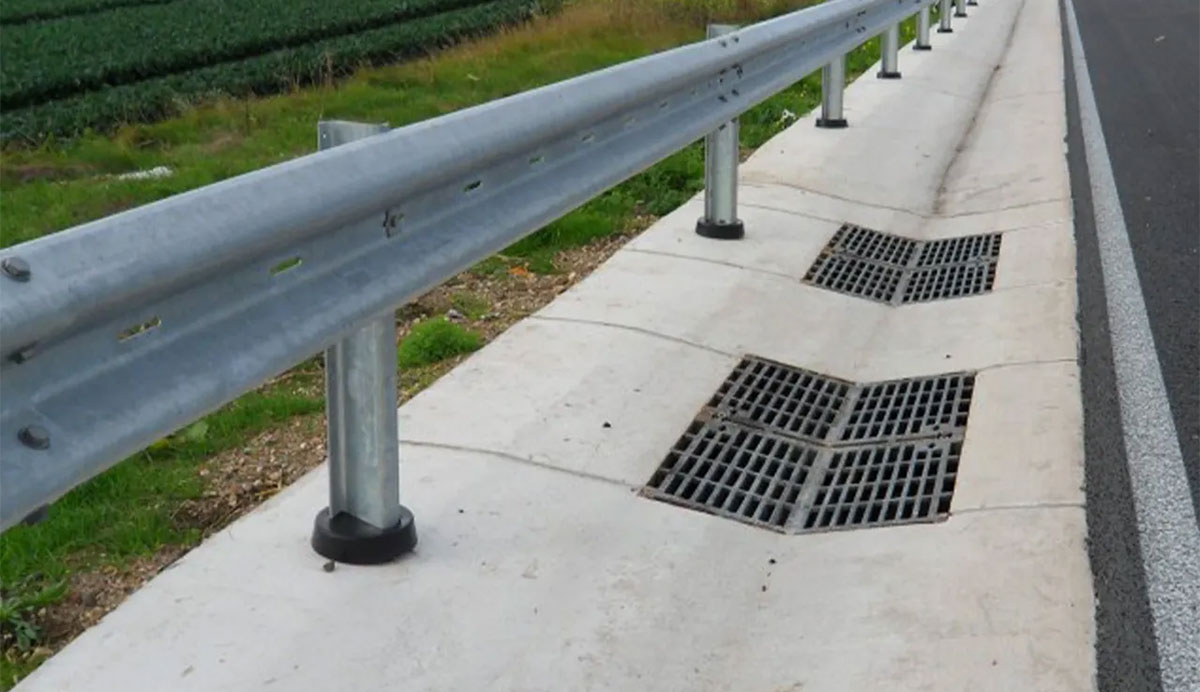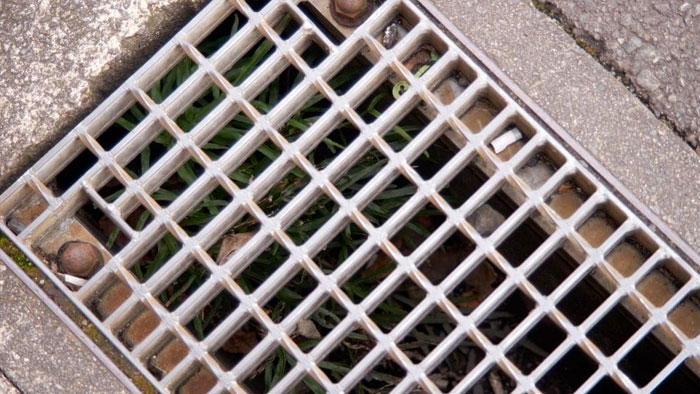
Drainage systems are essential for effective water management and preventing issues like flooding and erosion. They employ various methods, such as surface and subsurface drainage, to control the flow of water. Components like geotextile and geodrain enhance the system’s efficiency and durability.
What is a drainage system
A drainage system refers to a network of pipes, channels, and structures designed to collect and remove excess water or wastewater from an area. Its primary purpose is to prevent water accumulation and effectively channel it away, ensuring proper drainage and preventing waterlogging or flooding. Drainage systems can be found in various settings, including residential, commercial, agricultural, and urban environments. They are crucial for managing stormwater runoff, wastewater from sinks and toilets, and groundwater.
The components of a drainage system typically include drains, gutters, downspouts, pipes, catch basins, manholes, and treatment facilities. Properly designed and maintained drainage systems help to protect infrastructure, prevent water damage, and maintain a healthy and safe environment.
What are drainage systems used for?
Drainage systems are used for several purposes, primarily aimed at managing water and preventing water-related issues. Here are the main uses and functions of drainage systems:
- Stormwater Management: Drainage systems are crucial for effectively managing stormwater runoff. They collect rainwater from roofs, paved surfaces, and landscapes and channel it away to prevent flooding, erosion, and property damage.
- Flood Prevention: Drainage systems help prevent flooding by collecting and redirecting excessive water away from vulnerable areas. Adequate drainage infrastructure, including ditches, culverts, and retention ponds, can help mitigate the impact of heavy rainfall or high water levels.
- Wastewater Disposal: It plays a vital role in managing and disposing of wastewater from residential, commercial, and industrial sources. They collect and transport wastewater from sinks, toilets, showers, and other sources to treatment facilities or designated disposal points.
- Groundwater Control: They can be used to control and manage groundwater levels. They utilize methods such as subsurface drains or dewatering systems to lower the water table and prevent waterlogging in areas with high groundwater levels.
- Erosion Control: Properly designed drainage systems can help prevent erosion by controlling the flow of water and redirecting it away from vulnerable areas. By managing runoff and preventing concentrated flows, erosion of soil and landscapes can be minimized.
- Infrastructure Protection: Drainage systems protect infrastructure, such as roads, buildings, and utilities, from water-related damage. By effectively managing water runoff and preventing pooling or seepage, they help maintain the integrity and longevity of structures.
- Land and Agricultural Drainage: They are used in agricultural settings to optimize soil conditions and crop growth. They remove excess water from fields, improving soil aeration, reducing waterlogging, and preventing crop damage caused by excessive moisture.
- Environmental Management: They can be designed to preserve and protect natural ecosystems. They aid in the management of wetlands, lakes, and natural watercourses, ensuring proper water flow, nutrient cycling, and habitat preservation.
Drainage system: What are its different types?
Drainage systems can be categorized into several types based on their design, function, and application. Here are some common types of drainage systems:
- Surface Drainage System: This type of drainage system focuses on managing surface water runoff. It includes features such as open ditches, swales, and channels that collect and direct water away from an area to prevent flooding and erosion.
- Subsurface Drainage System: Subsurface drainage systems are used to manage groundwater and excess moisture in the soil. They typically consist of perforated pipes or drain tiles installed beneath the ground surface to collect and transport water away from saturated areas.
- French Drain: A French drain is a type of subsurface drainage system that utilizes a perforated pipe surrounded by gravel or rock. It is designed to collect and redirect groundwater away from structures or low-lying areas, preventing water accumulation and damage.
- Combined Sewer System: In urban areas, a combined sewer system is used to collect both stormwater runoff and wastewater from buildings. The system transports the combined flow to a treatment facility or a water body for disposal or treatment.
- Separate Sewer System: In contrast to a combined sewer system, a separate sewer system has separate networks for stormwater and wastewater. Stormwater is collected and discharged directly into water bodies, while wastewater is transported to treatment facilities.
- Roof Drainage System: Roof drainage systems collect rainwater from rooftops and direct it away from buildings. They typically consist of gutters, downspouts, and drainpipes that channel water to the ground or a designated drainage system.
- Agricultural Drainage System: Agricultural drainage systems are used in farming to manage excess water and improve soil conditions. They often involve subsurface drains, surface ditches, or tile drains to control water levels and prevent waterlogging in fields.
- Road Drainage System: Road drainage systems are designed to manage water runoff from road surfaces. They include features such as curbs, gutters, catch basins, and underground pipes that collect and convey water away from roadways to prevent flooding and maintain road integrity.
- Urban Drainage System: Urban drainage systems are comprehensive networks that manage stormwater runoff, wastewater, and sewage in urban areas. They include a combination of surface and subsurface drainage components to collect, transport, and treat water for proper disposal or reuse.
What are the methods used in a drainage system?
Here are some common methods used in drainage systems:
- Grading: Grading involves shaping the land or ground surface to create slopes or gradients that promote the natural flow of water away from the desired area. By strategically adjusting the elevation and contours of the land, water can be directed towards drainage points or away from structures.
- Surface Channels: Surface channels, such as open ditches, swales, or gutters, are designed to collect and convey water along a defined path. They help prevent surface water accumulation and guide it towards appropriate drainage outlets or retention areas.
- Underground Pipes: Underground pipes, often made of materials like PVC or concrete, are used to collect and transport water below the ground surface. These pipes can be perforated or have slots to facilitate the collection of subsurface water and its conveyance to appropriate outlets or treatment facilities.
- Catch Basins: Catch basins, also known as stormwater or sediment basins, are structures that intercept and collect surface water runoff. They are typically located at low points or along the path of water flow and have inlets to capture water and sediment. Catch basins often include grates or screens to prevent debris from entering the drainage system.
- Culverts: Culverts are structures that allow water to flow under roads, driveways, or embankments. They are typically constructed from pipes or reinforced concrete and are used to maintain the natural flow of water across barriers. Culverts can range in size and shape depending on the volume of water and the site requirements.
- Retention and Detention Ponds: Retention and detention ponds are designed to temporarily store and control excess water during heavy rainfall events. Retention ponds hold water for a more extended period, allowing for natural filtration and infiltration, while detention ponds are designed to release water gradually to prevent downstream flooding.
- Subsurface Drainage: Subsurface drainage involves the installation of perforated pipes or drain tiles beneath the ground surface. These drains collect excess water from saturated soils and transport it to outlets, ditches, or treatment facilities. Subsurface drainage helps alleviate waterlogged conditions, enhance soil aeration, and prevent crop damage.
- Erosion Control Measures: Erosion control measures, such as retaining walls, gabions, or erosion control blankets, can be incorporated into drainage systems to stabilize slopes and prevent soil erosion. These measures help maintain the integrity of drainage structures and prevent sedimentation in water bodies.
- Pumping Stations: In areas where natural gravity flow is not sufficient, pumping stations are used to lift or move water to higher elevations. These stations include pumps, control systems, and storage tanks to facilitate the efficient movement of water within the drainage system.
The purpose of geotextile and geodrain in a drainage system
Geotextile and geodrain are two important components used in drainage systems to enhance their effectiveness and longevity. Here’s the purpose of each:
- Geotextile: Geotextile is a permeable fabric made from synthetic materials like polyester or polypropylene. It is used in drainage systems for the following purposes:
- Filtration: Geotextile acts as a filter by preventing fine particles, such as soil or sediment, from entering the drainage system. It allows water to pass through while retaining soil particles, preventing clogging and maintaining the flow capacity of the system.
- Separation: Geotextile is used to separate different soil layers or materials with different properties. It prevents the mixing of adjacent layers, such as preventing the migration of fine-grained soils into coarse aggregate layers, thus maintaining the integrity and functionality of the drainage system.
- Reinforcement: Geotextile can provide additional stability and reinforcement to the soil. It helps distribute loads and reduce the potential for soil movement or erosion, particularly in areas with weak or unstable soils.
- Protection: Geotextile can be used to protect the drainage system from damage caused by external factors, such as roots, rocks, or sharp objects. It acts as a protective barrier, preventing punctures or abrasions that could compromise the performance of the system.
- Geodrain: Geodrain, also known as geocomposite drain, is a prefabricated product that combines a geotextile and a core made of a drainage material (such as a geonet or a geospacer). Geodrain serves the following purposes in a drainage system:
- Drainage: The core of geodrain provides a pathway for the efficient flow of water within the drainage system. It allows water to be collected and transported to outlets or designated discharge points, preventing water accumulation and potential damage.
- Filtration: Similar to geotextile, the geodrain’s geotextile component acts as a filter, preventing the ingress of soil or fines into the drainage core. This helps maintain the hydraulic efficiency of the drain and prevents clogging.
- Strength and Protection: Geodrains often have a sturdier construction compared to standalone geotextile. They can provide additional strength and protection to the drainage system, especially in areas with higher loads or where protection against punctures or shear stresses is required.
- Versatility: Geodrains can be customized with different core materials and geotextiles, allowing them to be tailored to specific project requirements and soil conditions. This versatility makes them suitable for a wide range of drainage applications.
Conclusion
In conclusion, drainage systems are essential for managing water flow, preventing flooding and erosion, and maintaining the integrity of infrastructure. They utilize various methods such as surface and subsurface drainage, underground pipes, catch basins, and retention ponds.
read more: Geosynthetic Products price
Components like geotextile and geodrain enhance the efficiency and longevity of drainage systems by providing filtration, separation, and protection. By effectively managing water, drainage systems contribute to the overall stability, functionality, and sustainability of both urban and rural environments.






